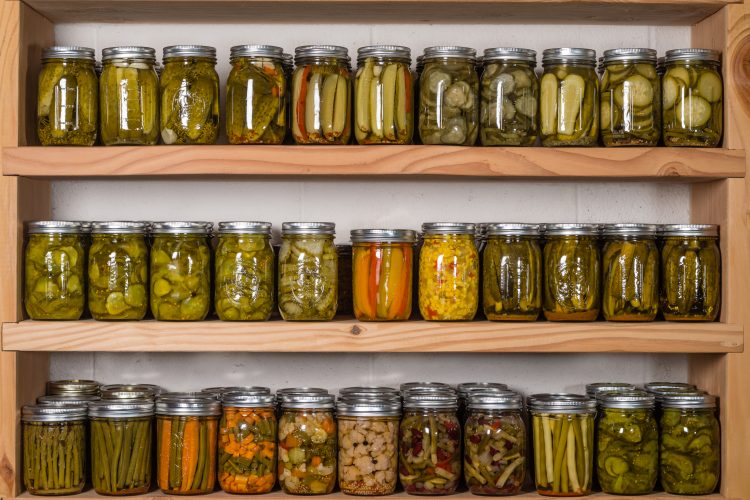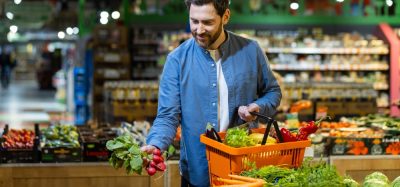Home canning: TikTok made me do it
- Like
- Digg
- Del
- Tumblr
- VKontakte
- Buffer
- Love This
- Odnoklassniki
- Meneame
- Blogger
- Amazon
- Yahoo Mail
- Gmail
- AOL
- Newsvine
- HackerNews
- Evernote
- MySpace
- Mail.ru
- Viadeo
- Line
- Comments
- Yummly
- SMS
- Viber
- Telegram
- Subscribe
- Skype
- Facebook Messenger
- Kakao
- LiveJournal
- Yammer
- Edgar
- Fintel
- Mix
- Instapaper
- Copy Link
Posted: 7 June 2022 | Emma Samuel | No comments yet
This #worldfoodsafetyday Emma Samuel, Environmental Health lecturer at Cardiff Metropolitan University, flags her concerns over risky social media food trends that could result in a rise of foodborne illness.


I am a TikTok devotee; I do not create content, but I enjoy viewing as it is a convenient cornucopia of lifestyle hacks from oven cleaning to bricklaying. On my ‘For You’ page, videos entitled ‘TikTok made me do it’ or ‘TikTok made me buy it’ appear regularly. These short videos (none exceeding three minutes) essentially demonstrate the influential nature of the platform. I know this is true as I am now the proud owner of an air fryer purely as a result of my own TikTok viewing habits.
Operating with clever algorithms, TikTok learns user preferences (from liking or swiping) and delivers increasingly tailored content to For You pages, which quickly become addictive.
I particularly enjoy the recipe posts. In the blink of an eye a creator has succeeded in delivering food that looks appetising and super easy to recreate; most recently a recipe for crunchy, delicious chickpea snacks that are roasted using said air fryer (ie, entirely worth the money) that I readily shared with my friend circle. The same cannot be said of all food-related posts however, and a recent one about home canning sent shivers down my food safety orientated spine.
The concern…
What appeared at first glance as home canned raw chicken (subsequent creator post assuring viewers it was cooked), served with a side of homemade mayonnaise (subsequently clarified as shop-bought – but with the addition of a raw egg yolk – in yet a further creator post), led me instantly to the comments section.


What is home canning?
Although home canning is not a process that is traditionally thought of as British, on a global platform without cultural borders, it is easy to see how the trend would appeal to any viewer experiencing a pinch in their pocket. As choices between heating or eating are very real right now, home canning offers many solutions; not least a well-stocked, convenient, ever-lasting pantry of fruit, vegetables, meat dishes and soups (according to TikTok creators at least). For the uninitiated, home canning involves filling glass jars (small and large) with the chosen food product (raw or cooked), applying a hand-tight lid – and for novices especially – cooking on a rolling boil (100˚C) in an open pan on the stove top (termed ‘water-bath’).
Long-term canners on the other hand will often choose to use a specialist pressure-cooker whereby the filled jars are loaded in a tall pan with a lockable lid and pressure gauge. Unlike the water-bath method, these cans will be brought up to a temperature of 115˚C (above boiling point) using a combination of steam and water. Foods which are naturally high in acid (ie, fruit, tomatoes, sauces) are suitable for the water-bath method, while low-acid foods requiring more care (ie, chicken, stews and all vegetables), must be high-pressure canned.
Why is home canning dangerous?
Undoubtedly, both methods are complex and a knowledge of the science behind food combinations (ie, low vs. high acid, low vs. high water content) and the impact on safe food outcomes is advisable as home canning generally does not involve additives or preservatives. The requisite time/temperature combinations (according to altitude; yes, this is true) coupled with needing sterile equipment and using food possibly on the edge of spoiling, are not easy to control in a home environment.
As such, the main risk to home canned food is the bacteria Clostridium botulinum. Present in water and soil (so naturally occurring in the environment), it is not associated with fresh foods as it is not active in oxygenated conditions. However, being a spore-former (meaning miniscule cells can reproduce independently), and capable of withstanding extreme heat, once activated and in favourable conditions, the bacteria will rapidly form botulinum toxin which causes food-transferred botulism illness.
In context, botulism favours restricted oxygen (hello, can!), low acid (hello, chicken thigh!) and a temperature between 4˚C and 49˚C to thrive (hello, cooling and cosy kitchen cupboard!)
So what some perceive as a convenient and cost-effective way to turn waste food into safe food, may well activate an undetectable toxin that could make the consumer very ill.
Why is Clostridium botulinum an issue?
Botulism symptoms include vertigo, speech difficulty, breathing issues, difficulty swallowing, paralysis and death.1,2 One of the most dangerous naturally occurring poisons known, only a few micrograms (before food is noticeably spoiled3) cause illness in adults and so the mortality rate is high.
So serious is the threat, once an outbreak (two cases or more) is confirmed, it is regarded as a public health emergency (be it from commercial or home canning sources).2
Unfortunately, home canned goods are in essence the perfect packaged food to gift or share with others because they are batch prepared and in plentiful supply. My deep dive into the TikTok comments also revealed that those who did attempt to articulate protestations that mirrored those noted above, were met with derision and condemned as being ‘haters’


This demonstrates well how food safety awareness continues to be an issue where consumers are concerned, in that the risks associated with eating out, shop bought or home canned foods are not really comparable. While it must be stressed that the creator extolling the virtue of water-bath canned chicken thigh was following long-standing family traditions, a review of other canning posts on the same account (including meat chilli, beef stew and various vegetables) made no attempt to highlight the risks if – and when – the canning process goes wrong. Indeed, one post advocated re-using canning jars and lids without explaining the oh-so-necessary sterilising routine.
Rebel canning and other concerns
So not to appear as though I am focusing unfairly on only one creator, a TikTok search for ‘home canning’ revealed that it had its own hashtag (#canningtiktok), with thousands of creator posts garnering 61.4 million views between them. A random dip into the selection on offer confirmed that the food safety misgivings were not unique to the chicken thigh aficionado either. Whole raw chickens (being quartered before canning) soaked and washed in the sink (a food safety no-no), the pre-washing of mushrooms in detergent (!), dry-canning (unfavoured), canning potatoes with skin in place (not recommended), the use of lid rings (which, on mason jars, can break the seal created while water-bath or pressure boiling), and canning dairy (including butter) were aplenty – every one of which left out vital, yet basic, food safety information.4
Notably, whenever a reasonable (but perhaps negative) question was posted in the comments, rarely did creators respond, choosing instead to focus on the furore. Rather more concerning though was a particularly ominous hashtag appended to some of these posts, namely: #rebelcanning.
The hashtag ‘#rebelcanning’ is a TikTok forum (with 21.4 million views at the time of writing) where creators openly acknowledge that none of their home canning content follows or meets, recommended guidelines. Often, the foods canned will include those which are considered high risk such as rice (low-acid) and dairy, with milk (low-acid) appearing one of the most popular.
Unsurprisingly, a search of #canning and #botulism in combination returned few posts but there was more success with #canning and #safety. One creator (responding to a viewer question via video) suggesting that botulism could be detected by listening to the sound the jar made when it was opened…I am #speechless.
Will we see a rise in botulism cases?
Although rare, the leading cause of botulism in the USA remains home canned foods.5 It is also worth noting that foodborne-related illnesses only develop distinct patterns or trends over time and are calculated and shared retrospectively.
There is also the notion that as TikTok unites the globe, sporadic home canned botulism outbreaks – which could prove fatal – will not necessarily be linked back to the information source rendering culpability impossible. The Centers for Disease Control and Prevention (US) report that the number of people dying from home canned food consumption has fallen dramatically since 2015.3 However, as TikTok only moved away from being a dance/music orientated platform in late 2018 (to what we know today), it will be interesting – or not, as the case may rightly be – to see whether botulism cases rise again in the coming years. Home-canning certainly continues to be a very real public health risk; peas the botulism culprit in New York in 2019.
Separating food safety fact from social media fiction
Many TikTok canners adopt the adage that it is ‘my kitchen, my rules’, but when followers are deeply invested in creator content, influencers have a lot to answer for when it comes to food safety.
But, as the saying goes, you cannot have the penny and the bun, and creators must do more to put this right by providing links to approved guidance in comment sections, using in-screen text, reinforcing that novice canners must do their own homework first,4 and if not, have a mandatory ‘risk to health possible’ caption similar to that used on adrenalin-junkie type TikTok posts.
The irony is that controversial TikTok posts garner the most attention which the algorithm perceives as popular. Those posts are then spread far and wide and brands and retailers take notice, often gifting creators, which leads to even more hype during ‘unboxing’ sessions. In reality, these rewards are simply reinforcing that the creator is credible and their content trustworthy, whether this is actually the case or not.

The chicken-thigh-gate example in this article played out over three separate posts (before we got to the bottom of what was really going on) and it cannot be assumed that subscribers will view them all (and certainly not when they are delivered to For You pages out of sequence). Currently, it is only possible to report such TikTok content as ‘misinformation’ (a checkbox) with no further means of explaining why. Providing the creator is not home canning naked, the content will remain as it will not breach TikTok’s community guidelines (regardless of the implications for food safety). With an estimated 1.2 billion users worldwide,6 those just starting out on their home canning journey who choose TikTok as their handy guide, therefore have endless opportunities to get the process horribly wrong.
Morally, one unnecessary food-related death is too many, but where home canning is concerned, there are no preventative TikTok controls to mitigate the risk of that happening. It is safe to say that on this occasion, TikTok most definitely did not make me do it, but I have absolutely no doubt that many TikTokers will.
New Food approached TikTok to flag the content but was informed that upon review it does not violate its community guidelines. According to the company, its Dangerous Acts policy includes inedible objects which covers certain types of food. Content found to violates these policies will be removed from the platform.
Notes:
* As far as the author can tell, no TikTok creators appeared to harm themselves during the making of their ‘canned’ content.
Budding home canners can find trustworthy information about the process here: GUIDE01_HomeCan_rev0715.pdf (uga.edu)
References
- Fish and Fishery Products Hazards and Controls Guidance (fda.gov)
- Botulism: clinical and public health management – GOV.UK (www.gov.uk)
- Home Canning and Botulism | CDC
- Savoie K. A. and Perry J. (2019) Adherence of Food Blog Salsa Recipes to Home Canning Guidelines. Food Protection Trends.
- Estimated annual number of episodes of illnesses caused by 31 pathogens transmitted commonly by food, United States* (cdc.gov)
- TikTok by the Numbers (2022): Stats, Demographics & Fun Facts (omnicoreagency.com)
About the author
Emma Samuel is a lecturer in Environmental Health and KESS2 doctoral student at the ZERO2FIVE Food and Drink Research Unit at Cardiff Metropolitan University. Her research study is an in-depth investigation of hand hygiene compliance in food manufacturing and the role food safety culture plays in shaping behaviour. Emma has over 10 years’ experience working with the hospitality and catering sector and maintains a keen interest in novel approaches to enhance food safety awareness and promote positive behaviour change.
Related topics
Food Safety, Outbreaks & product recalls, Pathogens, recalls, The consumer









